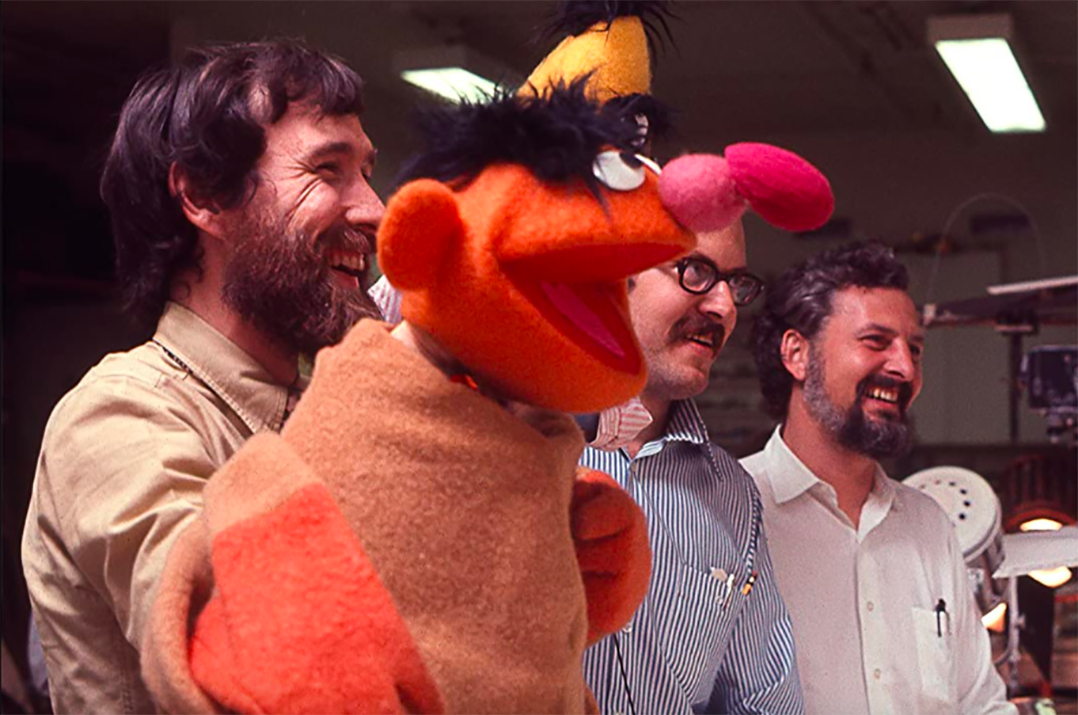In the mid-1960s, television executive Joan Ganz Cooney had a “light bulb” idea to produce a children’s program which would also educate them to prepare them for school. The concept seems simple now, but back then several phenomena intersected to lay the groundwork for “Sesame Street,” the longest-running and most beloved children’s show of all time. Marilyn Agrelo’s new documentary, “Street Gang: How We Got to Sesame Street,” chronicles the early years of the groundbreaking program.
First, every TV show aimed at kids (save for the unmentioned “Captain Kangaroo”) was structured on the premise of selling merchandise to children, via their parents. The makers of toys, breakfast cereals, and candy would sponsor children’s television programs, with the expectation that their viewers would buy their products. Second, the number of hours children (particularly inner-city children) would spend in front of the TV every day was astronomical. And third, inner-city children were beginning first grade markedly behind their suburban counterparts. Many urban youth were unable to count to 10, or recite the alphabet. Cooney set out to change this fact.
With the help of television writer Jon Stone (and a grant from the U.S. Dept. of Education), Cooney assembled a group of educators who specialized in preschool children, and television executives and writers who shared her vision of utilizing TV as an educational tool. Imagine the DOE funding such research now, without a gaggle of politicos complaining about a waste of taxpayer dollars.
At first, neither Cooney nor Stone knew what shape or form the end result would take. Initial discussions were strictly conceptual – how children learned, what they were capable of learning, what methods of learning held their interest, and so forth. As ideas began to develop, Cooney and Stone tested their concepts with 3- to 5-year-olds in a market research-type setting. When they responded well to puppets, the roundtable of education and television experts turned to Jim Henson, whose puppets had graced both late-night TV and the “Ed Sullivan Show.”

Henson and his friend Frank Oz then developed the initial group of “Sesame Street” puppets (called Muppets), including Cookie Monster, Ernie and Bert, Grover, and Henson’s first creation, Kermit the Frog. (Elmo didn’t come along until much later.) After his initial introduction as an oversized goofball, Big Bird was given the persona of a four-year-old child, and since then has been used to express their feelings accordingly. When “Sesame Street” adults speak to Big Bird, they speak to him as though they are speaking to a four-year-old (and, yes, the roundtable of educators continued throughout the course of the program; it did not disband once “Sesame Street” hit the airwaves.) Oscar the Grouch was used to represent the feelings of kids having a bad day. What child hasn’t felt like Oscar at one time or another? If a child were having a good day, Oscar was merely a funny Muppet living in a trash can.
In “Street Gang,” we also learn how the concept of an inner-city street was developed. The urban youth – the group Cooney and Stone most desired as viewers – spent many waking hours playing in the street or looking out their windows at the streets below. Much of the action in their lives revolved around the street. Hence the street as the show’s setting – as opposed to a suburban school playground or a suburban backyard.
There’s a lot to digest in “Street Gang.” We learn how the original cast of humans was developed. We learn how each Muppet’s personality was refined over the early years. We learn how the show’s musicians wrote various “Sesame Street” songs. It’s a fascinating look at a show that not only parents rediscover with their own children, but now grandparents can watch nostalgically with their grandchildren.
Unfortunately, the wealth of potential material also is “Street Gang’s” downfall. There’s so much we want to know about “Sesame Street” that it would take at least another two documentaries to satisfy viewers. “Street Gang” takes us through the 1982 death of actor Will Lee, who played Mr. Hooper. Much attention is given to the brilliant way in which the show’s creators dealt with his death. The show’s adult humans explained Mr. Hooper’s permanent absence to Big Bird – again, the proverbial 4-year-old child. But I would like to have seen segments on characters (Muppet and human alike) who came along later – such as Elmo, Ruth Buzzi, and Savion Glover.
Also, certain topics are merely touched on in passing, such as the time Paul McCartney sued “Sesame Street” for using his tune for “Let It Be” in their song “Letter B.” (McCartney settled the lawsuit for $1 because he so believed in the mission of the show). More time could have been spent on this episode. Likewise, how about some brief interviews with the many famous people who have appeared on the show through the years? We see clips of Paul Simon, Stevie Wonder, James Taylor, the Rev. Jesse Jackson and others. Is it asking too much of Agrelo to treat us to their thoughts?
Again, a documentary on “Sesame Street” could last four hours and still barely scratch the surface of our interest in this landmark of television history. “Street Gang’s” subject is almost too big for the traditional documentary format. I give it a good solid “B” for effort, and for showing us how this show came together. But there’s simply so much more I want to know. “Street Gang” would almost work better as a multi-night PBS documentary, a la Ken Burns, although perhaps not on that enormous a scale. If you’re a fan of “Sesame Street,” “Street Gang” is almost required viewing – with the caveat that it will leave you wanting for more.



